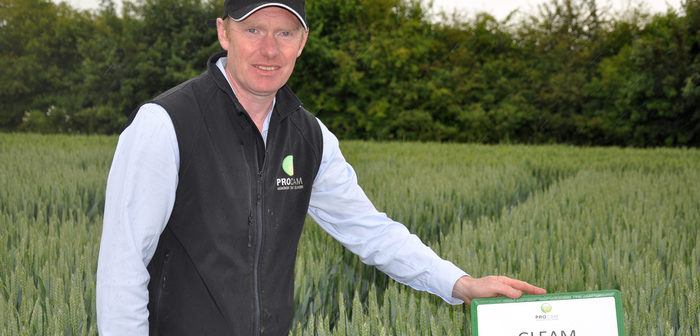Restricted growth of vital moisture and nutrient-absorbing roots could cause serious setbacks in winter wheat crops this season, unless steps are taken to remedy the problem, says ProCam regional technical manager, Nigel Scott.
But while limited root growth is no surprise in late-planted fields, because crops have had less time to grow, rooting problems are also evident in this season’s early-planted crops, he says, and there is a relationship in wheat that says the longer the roots at flowering, the higher the yield.
“Early-drilled wheat crops have established well,” says Mr Scott, “and test digs have indicated they have developed reasonable crown roots. However, because they have sat in waterlogged soils over winter, growth of their finer adventitious roots, which are the ones that seek out moisture and nutrients, has been poor.
“As well as having limited root structures, late-established crops have also had less time for tillering.
“Meanwhile, because of excess winter rainfall, some leaching of soil nutrients has been inevitable. Otherwise, these nutrients would have helped.”
In response, Mr Scott says improving root mass should be a key focus this season, along with improving tiller production where necessary to attain the optimum number of ears per square metre.
Findings from ProCam 4Cast, the company’s annual big data analysis of thousands of hectares of cropping, have shown that late-established crops can still produce decent yields, but it is vital to pay attention to detail, he stresses.
“An early application of plant growth regulator can help in multiple ways,” he continues. “As well as helping to improve root mass, by reducing apical dominance, it also stimulates tillering, which helps to offset low plant populations or loss of tillers due to winter kill. Optimising tillering also increases the number of crown roots in backward crops, which reduces root lodging, and can improve thousand grain weight.
“With this in mind, I will be looking to apply an appropriate plant growth regulator as soon as possible this spring within label restrictions. However, hand-in-hand with growth regulation goes good crop nutrition.”
As well as nitrogen being important to boost tillering and rooting, Mr Scott says certain bio-stimulants definitely help to boost root mass – something that has been seen repeatedly in independent research that ProCam has commissioned and in ProCam’s own trials.
Accordingly, he says this is a prime season to consider applying a combined bio-stimulant and micronutrient treatment – beginning while crops are still tillering – although it is important to choose the correct one.
“Based on experience, and because they aren’t expensive, I will be looking to maintain a little-and-often bio-stimulant + micronutrient programme right through this season,” he continues. “By co-applying them with fungicides, you are taking steps to protect crops against the effects of unknown future weather.
“If the season turns dry, and root mass has been improved, plants are better able to scavenge for soil moisture and nutrients. We saw in the dry summer of 2018 that we had excellent yield responses from a bio-stimulant and micronutrient programme on top of fungicides.
“Alternatively, if it turns into a wet summer and disease pressure is high, the fungicide elements protect yield.
“During the 2018/19 winter, roots naturally grew deep, so crops were better prepared for the dry spring that followed. This season we don’t have that luxury. So it will be important to build root mass early to prepare crops ready for flowering and grain-filling in case we have a dry summer.”




